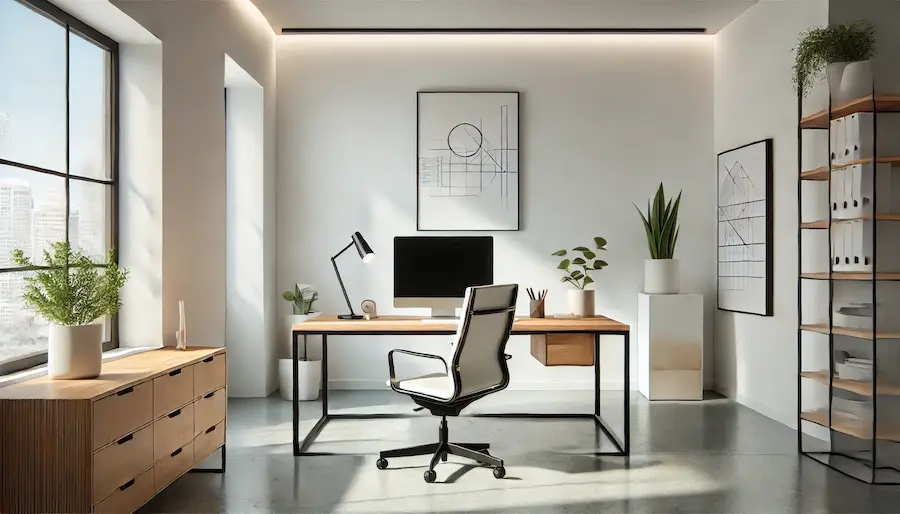Designing a modern minimalist office room involves crafting a workspace that embodies simplicity, efficiency, and aesthetic elegance. This style focuses on clean lines, uncluttered spaces, and intentional design choices, creating an environment that encourages productivity and tranquility.
History and Origins of Modern Minimalist Design
Minimalist design originated in the mid-20th century as a counter-movement to the elaborate and decorative styles of earlier periods. Drawing inspiration from the Bauhaus movement and Japanese Zen principles, this design philosophy emphasizes the mantra “less is more.” It highlights functionality and simplicity while reducing distractions, making it a popular choice for workspaces in today’s fast-paced world.
Key Features of a Modern Minimalist Office Room
- Neutral Color Palette: Dominated by whites, grays, and earthy tones to evoke calmness and focus.
- Functional Furniture: Pieces with clean lines and practical uses, often multi-functional, to optimize space.
- Open Layouts: Prioritizing an uncluttered and organized workspace for better mental clarity.
- Natural Lighting: Using large windows or skylights to enhance openness and provide a connection to the outdoors.
- Seamless Technology Integration: Discreetly incorporating devices and cables to maintain an uncluttered appearance.
Applications of Modern Minimalist Design in Office Spaces
Minimalist office rooms are ideal for fostering productivity and well-being. They help minimize distractions by reducing visual clutter and providing a sense of order. Beyond aesthetics, this style often incorporates sustainable practices, such as energy-efficient lighting and eco-friendly materials. Minimalist offices also reflect a company’s commitment to modernity and innovation.
Considerations When Designing a Modern Minimalist Office Room
- Space Planning: Strategically place furniture to ensure smooth movement and workflow.
- Adequate Storage: Use sleek cabinets and organizers to maintain a tidy and minimalist look.
- Personalization: Include subtle personal touches like a plant or artwork for warmth without overwhelming the aesthetic.
- Durability and Quality: Invest in premium materials that are both timeless and resilient.
- Ergonomics: Opt for furniture that supports health and comfort during extended working hours.
Conclusion
A modern minimalist office room is a harmonious blend of functionality and aesthetics. By focusing on essential elements and eliminating unnecessary distractions, it creates an environment conducive to productivity, creativity, and a sense of well-being. Whether for a home office or corporate setting, minimalist design principles ensure a timeless, practical, and serene workspace.
